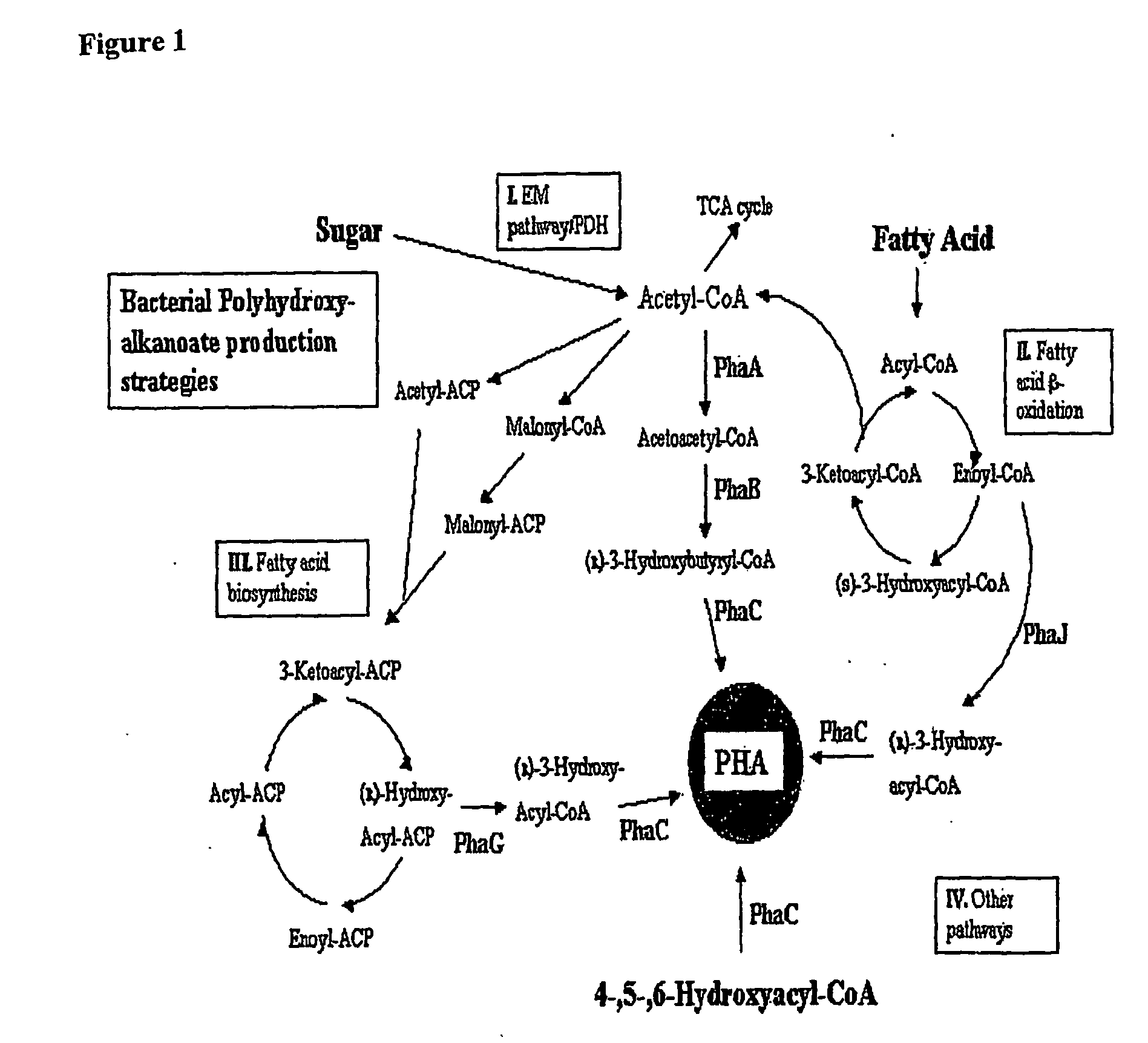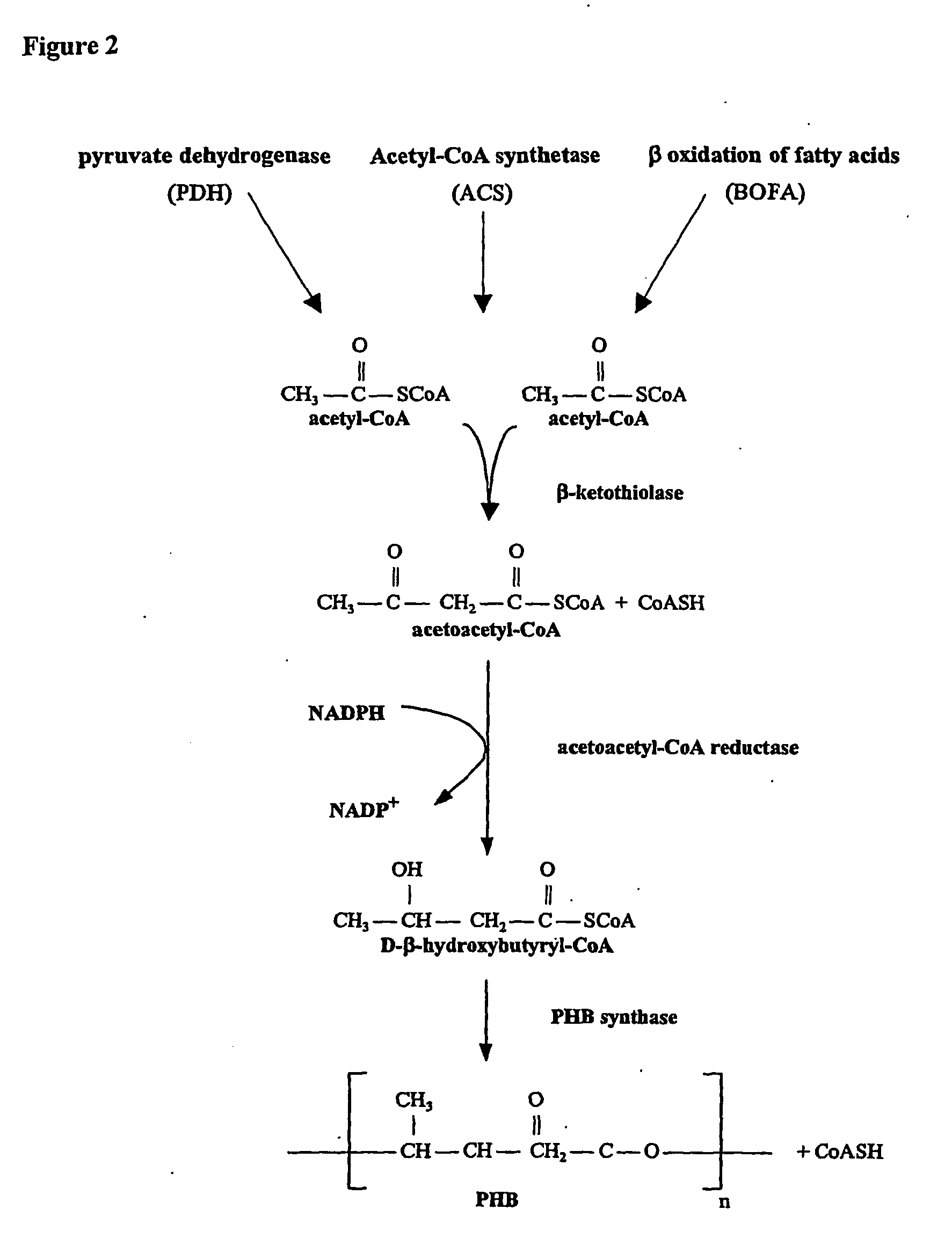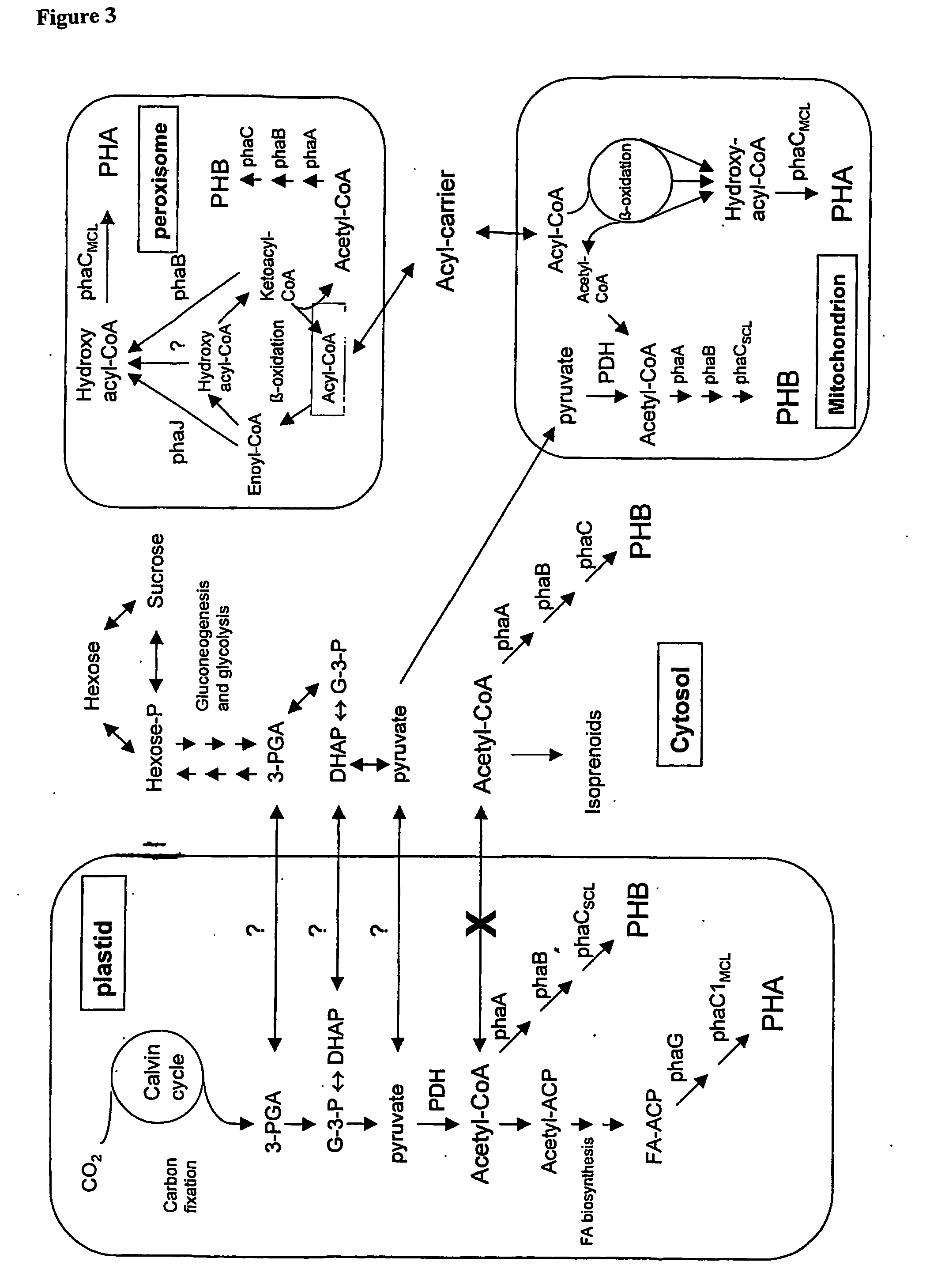Transgenic plants used as a bioreactor system
- Summary
- Abstract
- Description
- Claims
- Application Information
AI Technical Summary
Benefits of technology
Problems solved by technology
Method used
Image
Examples
example 1
Materials
[0541] Restriction digests, DNA ligations and all other DNA manipulations were performed as described in Sambrook, et al., Molecular Cloning, A Laboratory Manual, 2nd edition, Cold Spring Harbor Press, 1989.
example 2
Cloning of the phaC1 Gene from P. aeruginosa
[0542] The phaC1 gene targeted to plant peroxisomes inserted into pART27 as an EcoRI / XbaI fragment, was obtained from Y. Poirier (University of Lausanne, Switzerland). In order to express the gene in sugarcane, it was excised with the said enzymes, end-filled with T4 DNA polymerase (Promega) and inserted into the SmaI site of pUBI-MCS-Nos. To achieve targeting of the phaC1gene product to mitochondria and plastids, the gene is modified as described below.
example 3
Generation of Genetic Constructs
(a) Constructs Comprising Sequences Encoding PHB-Synthesizing Enzymes
[0543] Constructs containing the phaA, phaB and phaC genes from Ralstonia eutropha targeted to plastids and cloned in pUC 18 as XbaI-SacI fragments were obtained from Y. Poirier (University of Lausanne, Switzerland).
[0544] The phaA, phaB and phaC genes derived from Ralstonia eutropha were cloned into the vector pU3z. This vector is a derivative of pGEM3 (Promega) containing the maize polyubiquitin promoter and nos terminator from A. tumefaciens, and works well as an expression vector in sugarcane. All genes were amplified / modified using the polymerase chain reaction (PCR) prior to insertion into pU3z except phaC1, which was blunt-end cloned into the same vector. All constructs used for plant transformation are listed below. Where inserts are modified, they are sequenced in full to ensure quality.
[0545] PCR modifications were performed as follows. Platinum Pfx (registered tradema...
PUM
| Property | Measurement | Unit |
|---|---|---|
| Fraction | aaaaa | aaaaa |
Abstract
Description
Claims
Application Information
 Login to View More
Login to View More - R&D
- Intellectual Property
- Life Sciences
- Materials
- Tech Scout
- Unparalleled Data Quality
- Higher Quality Content
- 60% Fewer Hallucinations
Browse by: Latest US Patents, China's latest patents, Technical Efficacy Thesaurus, Application Domain, Technology Topic, Popular Technical Reports.
© 2025 PatSnap. All rights reserved.Legal|Privacy policy|Modern Slavery Act Transparency Statement|Sitemap|About US| Contact US: help@patsnap.com



